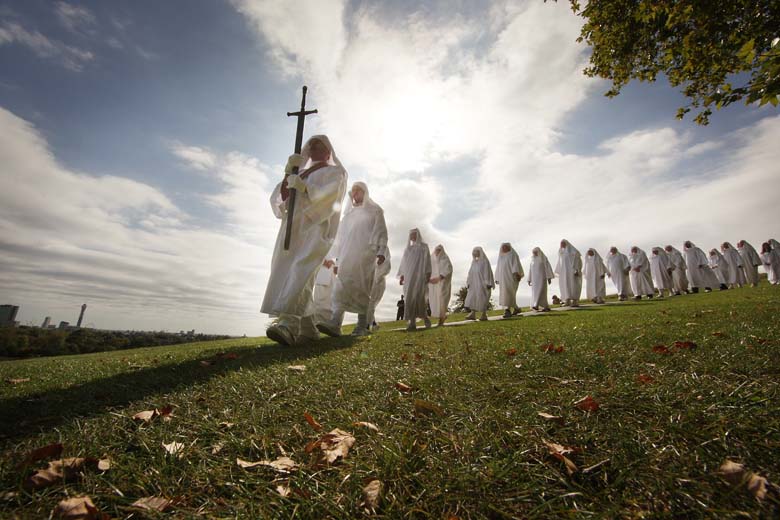
Today is the fall equinox, aka the autumnal equinox. It is the first official day of autumn where daytime and nighttime are approximately the same lengths. There are two equinoxes every year – in September and March – when the sun shines directly on the equator and the length of day and night is nearly the same. The one in March is known as the spring, or vernal, equinox, and marks the beginning of spring.
Today on the East Coast, the autumnal equinox is at 4:02 pm EDT. In Central Time it is 3:02 PM, in Mountain Time it is 2:02 PM and Pacific Time it is 1:02 PM.
However, today is only the first day of the astronomical fall. The meteorological fall started on September 1. According to the Metro, meteorological seasons are based on the annual temperature cycle and are split into four seasons of three months. With the meteorological calendar, fall lasts until November 30, but the winter solstice isn’t until Thursday, December 21.
Learn more about history and origins of the fall equinox below:
1. It Is 1 of 4 Seasonal Astronomical Events
The fall equinox lands on either September 22, 23, or 24 every year in the northern hemisphere. It is one of the four seasonal astronomical events that impact earth. The other three are the winter solstice, the spring equinox, and the summer solstice.
The fall equinox is also known as the autumnal equinox. “Autumnal” means “of relating to autumn” in Latin. The word “autumn” comes from the ancient Romans, according to the Online Etymology Dictionary, and may mean “drying-up season.” “Equinox” means “equal night” in Latin. The spring equinox is one of the two annual equinoxes where the sun shines directly on the equator and the length of day and night is nearly the same.
There’s also something called an “equilux,” which means “equal light” in Latin. The spring equilux occurs about four days before the spring equinox, which means it occurred on March 17. According to the Pine River Observatory, an equilux is “the day that has equal hours and minutes of sun above and below the horizon.”
In the fall, the autumnal equilux falls about four days after the autumnal equinox.
2. Equinoxes Aren’t Solstices
Equinoxes are different than solstices. Solstices occur in the summer and winter. When the earth rotates on its axis, it reaches the point of maximum tilt, either when the northern hemisphere is the most tilted away from the sun, winter, or when it is tilted toward the sun, summer.
For inhabitants of the northern hemisphere, the winter solstice process becomes most noticeable around December 1 when the sun appears to “move” south and get smaller. By the day of the actual winter solstice, the sun has reached its lowest point in the sky at -25.5°. Once it has reached the lowest point, an interesting thing happens: the sun appears to stop moving south for three days. After this, the sun moves 1° north, announcing the coming of spring. It will continue to move northward until the summer solstice when it reaches its highest point.
3. It Is a Celebration Time for Pagans

Druids celebrate the Autumn equinox on Primrose Hill on September 22, 2009 in London, England.
There was a lot of religious mysticism involved with autumnal equinox in the ancient world that has entered into the modern world with holidays all sharing similar themes. The most common theme associated with the autumnal equinox is harvest and death.
For modern Pagans, the two most important of holidays that celebrate these are known as Mabon and Samhain. Mabon was reintroduced in 1970 by Aidan Kelly, a Neopagan. It is a harvest festival named after Mabon ap Modron, a Welsh deity featured prominently in the King Arthur lore and who is likened to the Roman god Apollo. Los Angeles-based pagan leader Laurie Lovekraft told the Huffington Post, “Mabon is a time to reflect on the previous year when we can celebrate our successes (likened to bringing in the harvest) and assess which crops, projects, or dreams didn’t come to fruition.”
Samhain was the Celtic “day of the dead” festival, held on November 1. According to History.com, the holiday (pronounced sow-in) is over 2,000 years old and was the new year for the Celts but also a time for harvest. They also associated it with death and new beginnings. They started celebrating the holiday the night before, October 31, as they believed ghosts were returning to the earth.
4. It’s the Spring Equinox in the Southern Hemisphere

A general view of the Sydney Opera House from the Sydney Harbour Bridge at night prior to the start of Athens 2004 Olympic Torch Relay June 2, 2004 in Sydney, Australia. (Todd Warshaw/Getty Images)
While the northern hemisphere prepares for fall, the southern hemisphere prepares for spring.
This means that as the northern hemisphere progresses into winter, continents like Australia and South America will begin to transition into summer.
Because of this, the autumnal equinox is sometimes referred to the as the “September equinox” when speaking globally.
5. Fall Doesn’t Mean Light Jacket Weather

Walkers pass trees showing their autumn colours on November 1, 2011 in Bath, England.
While the official first day of fall is related to when the equinox occurs, it might not feel like the light jacket weather we all crave right away—even for northern latitude countries like the U.S.A. and Canada. That’s because fall weather varies with climate.
But rest assured, light jacket and pumpkin spice weather will come!

